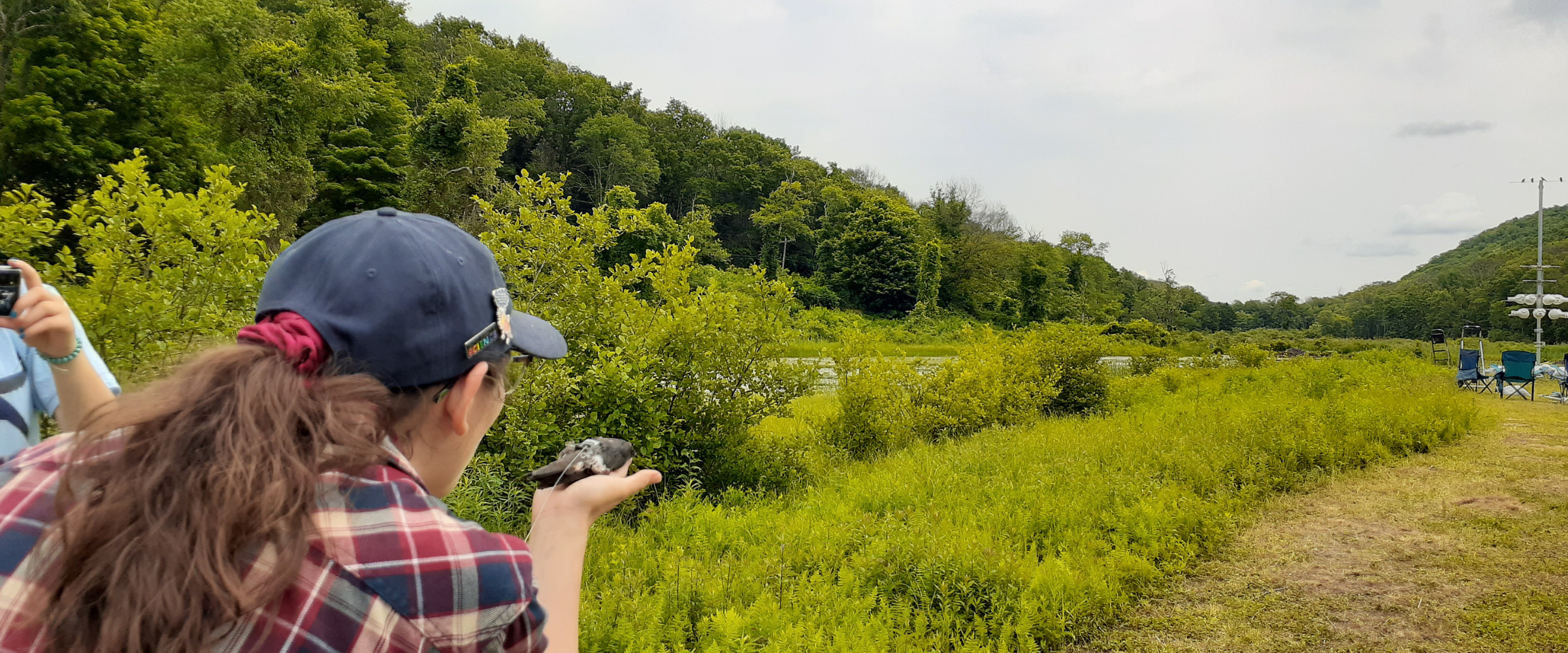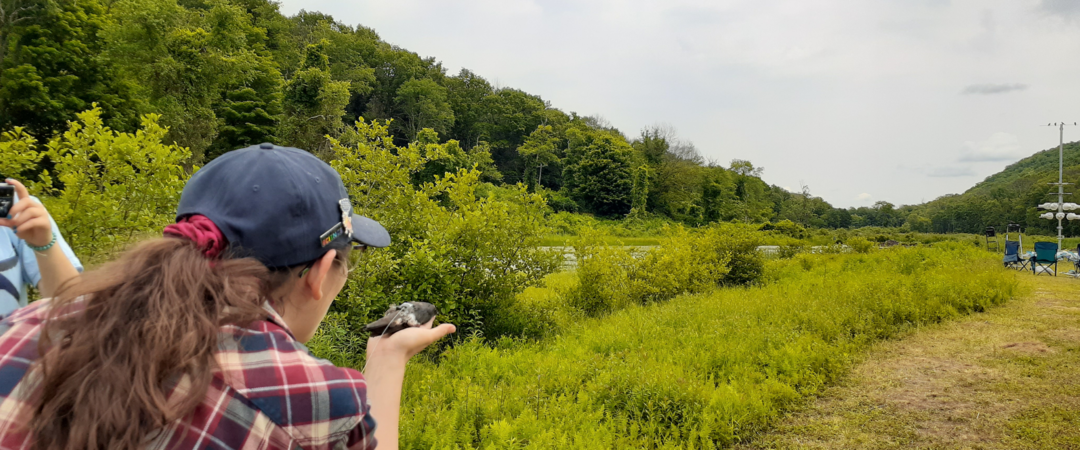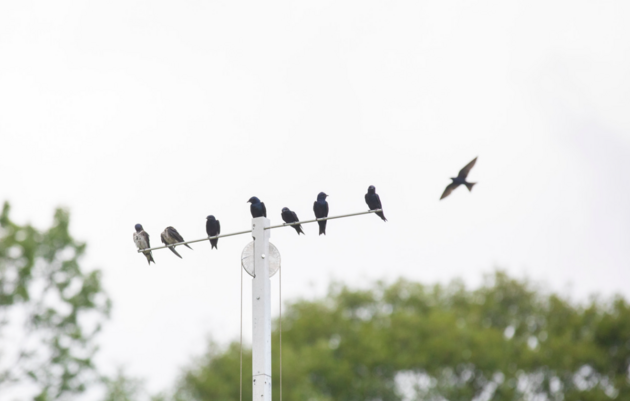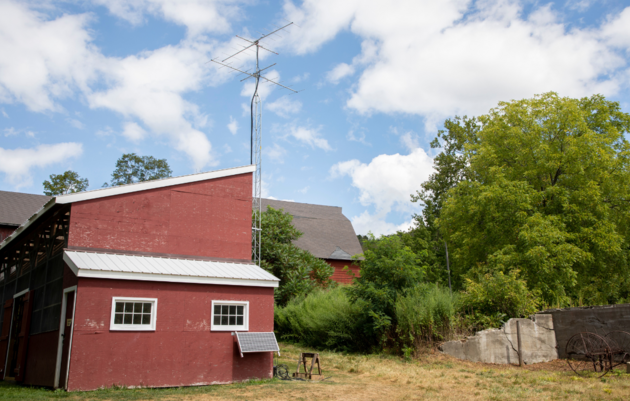Across the northeastern United States, Purple Martins are an increasingly rare sight. For the past 50 years, their population numbers have been on a steady decline, but there is an exception to this rule: the northwest corner of Connecticut. Unlike in other parts of the country, sustained conservation and monitoring efforts have shown that martins in this region are growing in population.
Now, conservationists are ready to bring this work from a local scale to a global one.
After all, studying birds where they nest and breed only reveals half their story. Like many migratory birds, Purple Martins spend half of their year outside of the United States. Research has indicated that they overwinter somewhere in the Amazon Basin, but figuring out exactly where is essential to the conservation of the species.
“We say a lot about the importance of protecting birds throughout their entire annual cycle, but that can be an abstract concept if you can’t picture the whole cycle,” says Eileen Fielding, director of the Sharon Audubon Center.
Several years ago, the Center accepted an offer to enter into a collaboration with Marvelwood School and the Kent Land Trust, who have been working for over a decade to restore inland Purple Martin populations, in conjunction with the Connecticut Department of Energy and Environmental Protection and the Purple Martin Conservation Association. It was the hard work of these partners that grew one colony—located on the Center's Miles Audubon Sanctuary—from four breeding pairs to thirty, a massive feat indeed.
This has set the stage to make use of new tracking technologies and bring us closer to completing that “whole cycle” picture.
High Tech and High-Flying
In June, ten Purple Martins from the colony at Miles Audubon Sanctuary were captured and fitted with either a GPS data logger or a nanotag. This brings the total of birds fitted with tracking devices in the northwest corner to a very exciting forty, split evenly between the GPS data loggers and the nanotags.
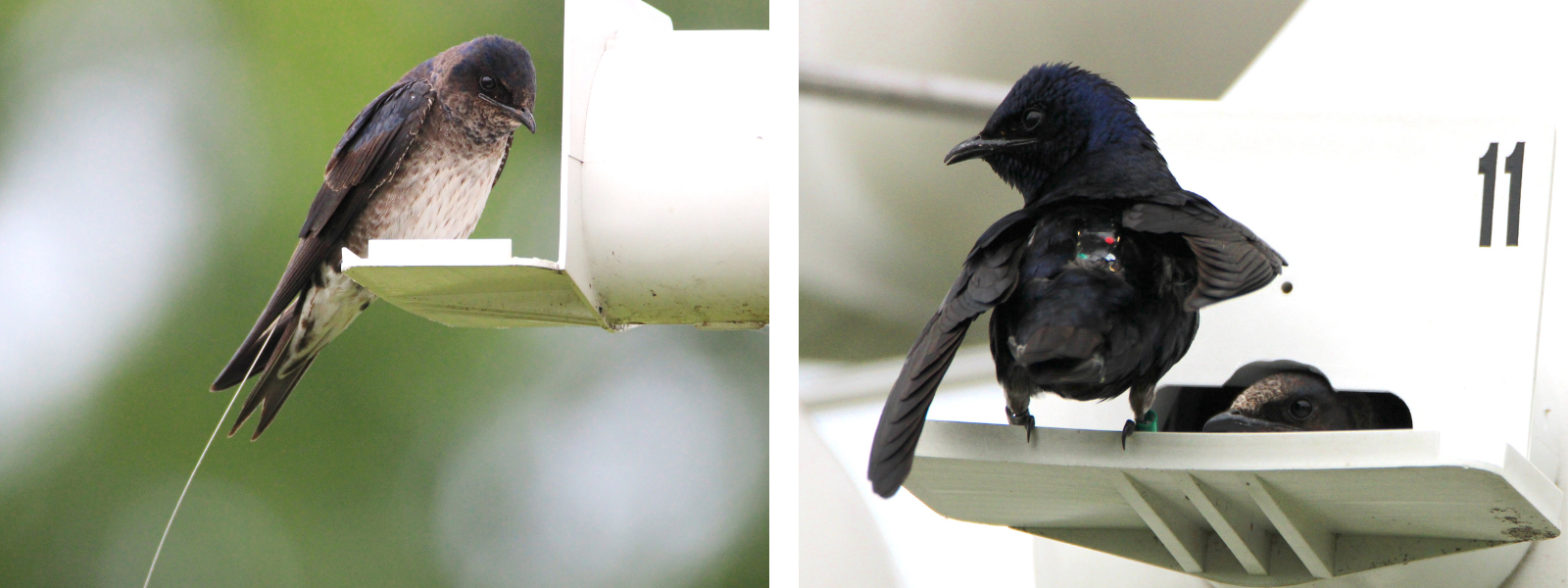
Each tracking device comes with its own strengths and weaknesses, so utilizing both can paint a clearer picture. While the GPS tags record precise location data, a bird wearing one must be recaptured for its data to be collected, which is not always possible.
Birds with nanotags do not have to be recaptured for their data to be collected, but they do need to fly within a certain radius of a Motus station—whose antennae pick up radio signals emitted by nanotags—for any data to be produced. Though the Motus network is continually growing—including a new station put up at the Sharon Audubon Center in August of 2022—it still has gaps that might allow for data to be lost.
Even so, some of these tagged birds are already providing more insight into their movements, pinging many of the local towers in addition to other across Connecticut and as far south as Maryland.
New Data Leads to New Solutions
“The nanotags and archival GPS data loggers will help us fill in the knowledge gaps about the movements of purple martins so that we can identify key breeding, roosting, migratory pathways and wintering sites,” says Laurie Doss, master bander and board member of the Purple Martin Conservation Association (PMCA). “The data collected via the GPS data loggers will also provide critical information to the [PMCA] and its partners in Brazil in their search for remote Amazon locations to study wintering martins.”
Doss has worked alongside many private and community partners for the past 17 years to band and research these birds and help maintain Connecticut's status as “the last stronghold for martin populations in the New England Region.”
The data collected will not only help answer these questions, but also create stories of individual birds that are valuable conservation tools in and of themselves. “People love a story,” explains Doss. “Being able to share the journey of individual martins helps to increase public excitement for the plight of this species, and builds global connections to conserve Purple Martins.”
Creating Opportunities for Early-Career Conservationists
Some lucky people even get to become part of this story. Much of this conservation work has also been used as an opportunity to involve young and early-career conservationists, including this exciting tracking project. Interns from the Kent Land Trust and the Sharon Audubon Center, along with students from the Marvelwood School, where more Purple Martin work takes place, assisted Laurie Doss and Joe Siegrist, president of the PMCA, with this project.

Allyson Thompson is another such participant. An undergrad at Northern Illinois University, she spent eight weeks as an intern at the Sharon Audubon Center this summer, thanks to support from the Yale Conservation Scholars program. The hands-on field work and conservation experience she gained has impacted not only her career, but also her feelings towards the field itself.
“Environmental science can be a heavy field of study,” she says. “Watching conservation in action at Audubon is extremely refreshing and provides a silver lining in what could be a very grey cloud.”
Just as these up-and-coming conservationists are the future of this field, so are these new and exciting tracking methods part of the future of conservation. With the help of these tags and the little birds that carry them, we’ll know more about Purple Martin migration habits come fall and spring, and be one step closer to stabilizing their populations in Connecticut and elsewhere in the Eastern United States.
This cutting edge research in northwestern Connecticut was made possible via a generous grant from the Jeniam Foundation to the Purple Martin Conservation Association.
All banding, marking, and sampling is being conducted under a federally authorized Bird Banding Permit issued by the U.S. Geological Survey and a State Permit authorized by the Connecticut Department of Environmental Protection.

